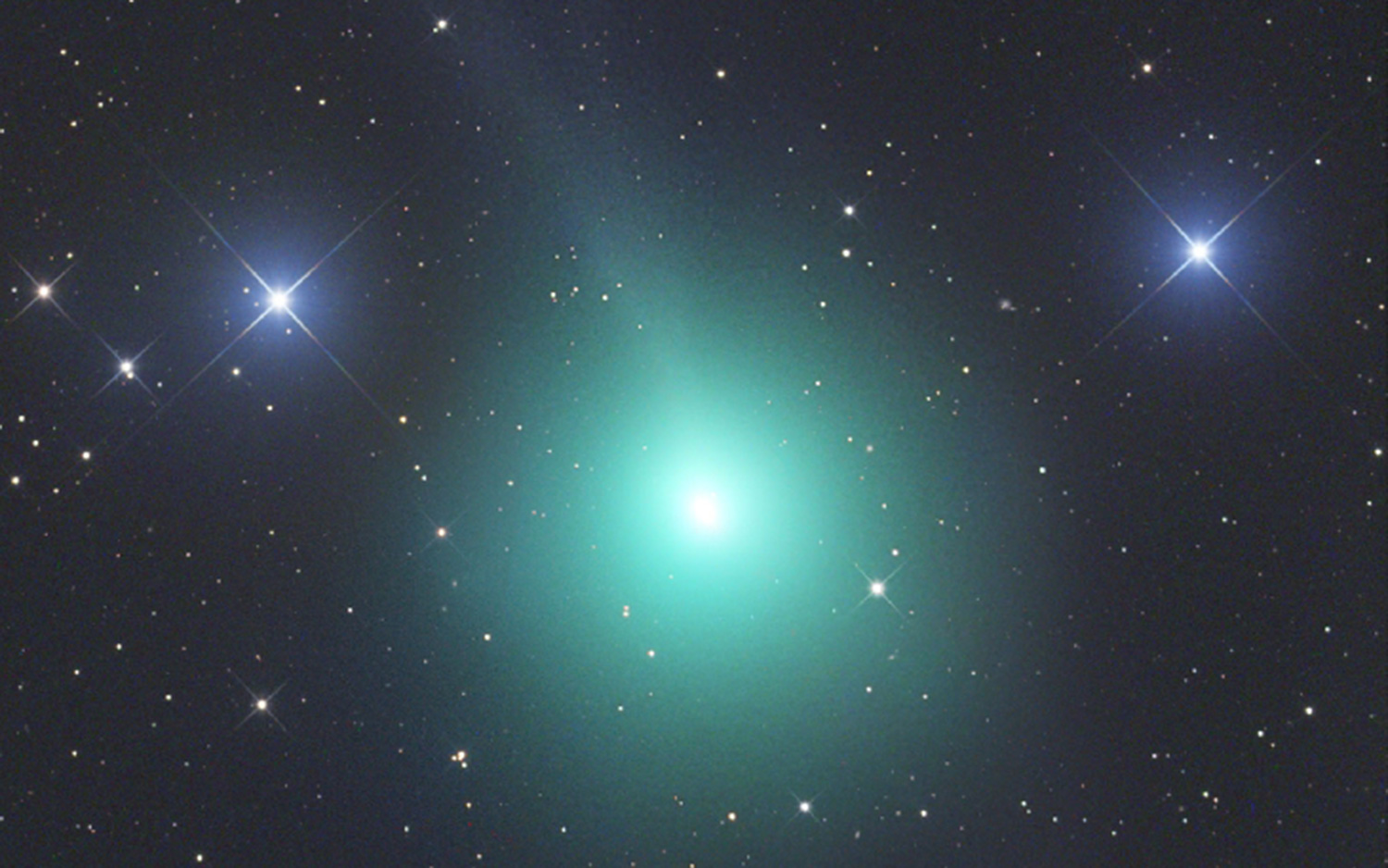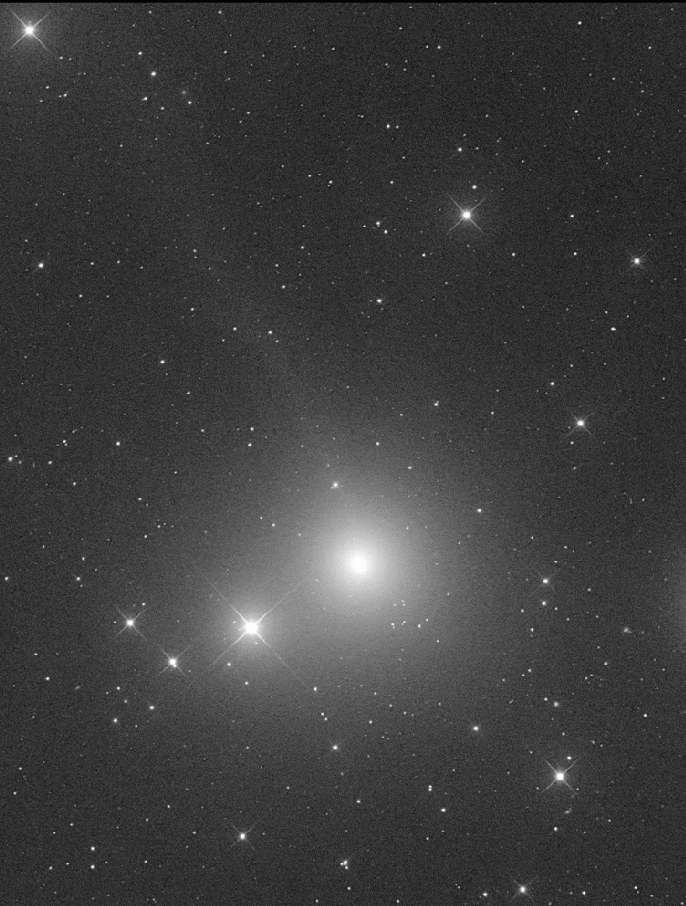How to See Comet Iwamoto Fly Past Earth This Week

The brilliant, blue-green comet C/2018 Y1 Iwamoto will zip by Earth this week, and the speedy space "snowball" is currently visible in the night sky with binoculars and small telescopes.
Discovered just two months ago by amateur astronomer Masayuki Iwamoto, Comet Iwamoto is an icy body that orbits the sun in a highly elliptical path that takes 1,371 years to complete. After this encounter, the comet won't be back until the year 3390, so check it out while you can!
Comet Iwamoto will make its closest approach to planet Earth at a safe distance of 28 million miles (45 million kilometers) on Feb. 12, around 3:10 p.m. EST (2010 GMT), and it is currently racing through the solar system at a speed of approximately 148,000 mph (238,000 km/h) relative to Earth, according to NASA's Horizons database, which calculates the positions and velocities of orbiting bodies. [Photos: Spectacular Comet Views from Earth and Space]
Comet Iwamoto made its closest approach to the sun — a point in its orbit known as perihelion — on Feb. 7, when it swooped around our star at a distance of 26 million miles (42 million km). You can see Comet Iwamoto's path around the sun in the orbit animation above.
The comet is now visible in the evening sky with binoculars and small telescopes, and the best times to look for it will be on Tuesday and Wednesday nights (Feb. 12 to 13), according to the skywatching site EarthSky.org. After this close approach, comet watchers will need more powerful telescopes to keep an eye on the comet as it fades out of view on its way back out to the farthest reaches of the solar system.

According to Spaceweather.com, Comet Iwamoto belongs to a class of solar system bodies known as Extreme Trans-Neptunian Objects, which come from the distant outskirts of the solar system. These objects are at least five times as far away from the sun as the dwarf planet Pluto.
"Shining with an astronomical magnitude of +6.5, the comet is invisible to the unaided eye. Nevertheless, it will be an easy target for backyard telescopes in the nights ahead as it glides through the constellation Leo the Lion high in the midnight sky," Spaceweather.com reports.
Get the Space.com Newsletter
Breaking space news, the latest updates on rocket launches, skywatching events and more!
To track Comet Iwamoto's position in the night sky, check out this finder chart from In-the-Sky.org.
Editor's note: If you have an amazing comet photo you'd like to share with us and our news partners for a possible story or gallery, please send your images and comments to spacephotos@space.com.
Email Hanneke Weitering at hweitering@space.com or follow her @hannekescience. Follow us on Twitter @Spacedotcom and on Facebook.
Join our Space Forums to keep talking space on the latest missions, night sky and more! And if you have a news tip, correction or comment, let us know at: community@space.com.

Hanneke Weitering is a multimedia journalist in the Pacific Northwest reporting on the future of aviation at FutureFlight.aero and Aviation International News and was previously the Editor for Spaceflight and Astronomy news here at Space.com. As an editor with over 10 years of experience in science journalism she has previously written for Scholastic Classroom Magazines, MedPage Today and The Joint Institute for Computational Sciences at Oak Ridge National Laboratory. After studying physics at the University of Tennessee in her hometown of Knoxville, she earned her graduate degree in Science, Health and Environmental Reporting (SHERP) from New York University. Hanneke joined the Space.com team in 2016 as a staff writer and producer, covering topics including spaceflight and astronomy. She currently lives in Seattle, home of the Space Needle, with her cat and two snakes. In her spare time, Hanneke enjoys exploring the Rocky Mountains, basking in nature and looking for dark skies to gaze at the cosmos.









